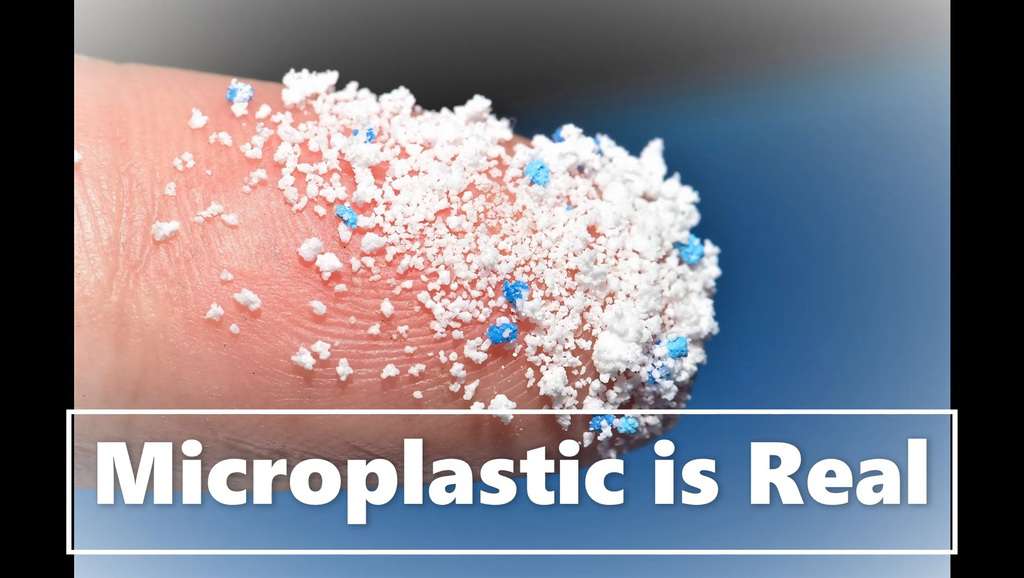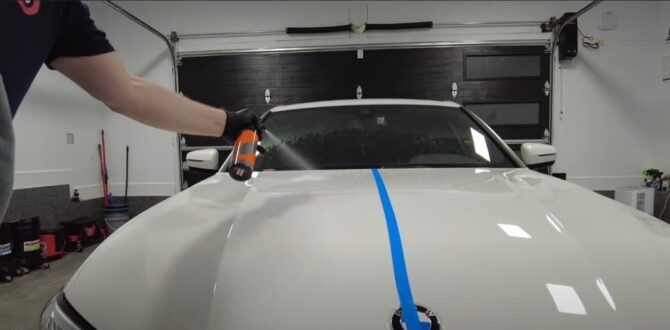Earth’s H2O-soaked atmosphere sure has produced a shit-ton of musical top hits hasn’t it? Over the past century countless musicians, actors, opera singers, and Broadway stars have all paid tribute to our planet’s precipitation, a life force that nurtures and erodes our planet’s surface.
But while titles like Singing in the Rain, November Rain, Fire and Rain, Have You Ever Seen the Rain, Purple Rain, and Blue Eyes Crying in the Rain have all been penned, the future of “rainy day music” is looking increasingly bleak.
Recent scientific reports have shown that over the course of the past few decades, our planet has become tainted by billions of tiny man-made plastic particles. Commonly referred to as “microplastics” or nanoplastics,” these itty-bitty pieces of trash are virtually everywhere, and from the looks of things they are increasing in count every day.
“Plastic Rain” has become the acid rain of the modern age, and from the looks of it, this garbage is here to stay. But where does microplastic come from? Why are we just now learning about this form of pollution? And what in the ever loving hell is it doing to our automobiles? Let’s find out…
What is Microplastic & Where Does it Come From?

Photo Credit: Science Magazine/YouTube
In 2019, while we were busy writing a blog focusing upon the detrimental effects of acid rain on automobile surfaces, the United States Geological Survey team was releasing some shocking discoveries. The government’s findings showed that plastics had been identified in over 90% of all “atmospheric deposition samples” it had collected in the Denver-Boulder area. Simply put, Denver’s rain water was teaming with tiny plastic particles.
While these findings definitely caught a few news headlines, there was little response from the global community; further proof that most humans don’t give a shit about the planet until it affects them directly.
It was not until the summer of 2020, when Utah State University scientist, Janice Brahney, released a report on the topic that people really began to wake the hell up. In her report, Brahney revealed that this form of plastic waste truly was everywhere. These findings were supported by numerous reports from members of the global scientific community, all of which painted the same ominous picture.
Microplastics are fucking everywhere. They are in the food we eat, the water we drink, the air we breath, the snow we shovel, and yes, the rain that pounds down upon our cars.
mi·cro·plas·tic/ˈmīkrōˌplastik/noun
Extremely small pieces of plastic debris in the environment resulting from the disposal and breakdown of consumer products and industrial waste. Typically measures less than five millimeters.
Currently, there are two kinds of microplastic that are recognized by the scientific community. Primary microplastics are generally of the microbead variety, a plastic commonly found in personal care products, fishing nets, clothing, and other textiles. These materials are intentionally manufactured to be quite small. Secondary microplastics on the other hand, are plastic fragments that have gradually become smaller over time due to friction, heat, pressure, and other forms of outside influence.

Photo Credit: Plastic Pollution Coalition/Facebook
“Most of these plastic particles are synthetic microfibers used for making clothing. These findings should underline the importance of reducing pollution from such materials.”
Science Mag
Getting A Closer Look of the Big Picture
Being that plastics tend to be incredibly resilient, and therefore won’t biodegrade, they will sooner rip or break apart when under duress. This is true for almost all plastic products, especially when given ample amounts of time and abuse. From a a discarded milk carton resting inside a worn-out shopping bag, to bags of chips sitting in the dump beside a child’s action figure, it all eventually becomes heaping piles of plastic dust.

So what does this colorful crap look like up close? Magnified beneath the lens of a powerful microscope (remember, some of this junk cannot even be detected with regular microscopes), it becomes clear that microplastic dust is much more than just a shit-ton of hard plastic particles. Millions of tiny fibers, all representing the many colors of the rainbow appear, like short-and-curly clown hairs, freshly plucked and then scattered upon the wind.
“Plastics don’t decompose. They just break down into smaller and smaller fibers, and that allows them to be transported through the atmosphere.”
Utah State University scientist, Janice Brahney
Compounding the matter, is the addition of additives like phthalates, which have made plastics both incredibly resilient, and toxic. Breakable, yet non-biodegradable, these plastic fragments are in and on, damn near everything. An invisible pollutant that thus far, appears to be impossible to control or capture.
Quick Nerd Note: Of the samples collected, almost all of the microplastic pollutants were so small that they could only be made visible via ~40X magnification. To put this scientific jargon into context, that’s like trying to examine something that is 150 times smaller than the width of a human hair.
Measuring no more than 0.1 micrometers in diameter, the tiniest microplastics that have been detected to date are so slight of stature that they are virtually impossible to filter from drinking water. Due to being so teensy-weensy (yeah, we just said teensy-weensy), this microplastic is more akin to an invisible dust than a tangible substance.
Microplastics and Our Cars
Covert Contamination
Explanation complete, we now turn toward the topic of microplastic particles, and the damage they are inflicting upon our automobiles, both externally and internally.
It may sound ironic, but the very plastics that go into making our cars is destroying them as well. From the plastic shavings accumulating on the floor of the plant where plastic bumpers are formed, to the degradation of Alcantara on a steering wheel, the materials we use to manufacture our vehicles are massive microplastic producers.
What, you thought that these petite plastic particles were going to coat every other surface on the planet, and then magically overlook automobiles? Every day, this invisible pollutant coats our cars with layer upon layer of discarded plastic, and you better believe this shit is embedding into our clear coats, clogging our air filters, and worse yet, infiltrating our engines.
While there has yet to be any research conducted on microplastic’s impact upon internal combustion engines, it is safe to assume that the finer particles are getting sucked-in via our vehicles’ air intake systems. Sure, there’s a filter on the front end of every petrol-powered automobile that’s designed to stop impurities from infiltrating the engine, but they aren’t engineered to remove impurities this small.
Essentially, our vehicles are sucking-up, and then burning unfathomable amounts of airborne plastic particles every time we drive. Our cabin air filters aren’t doing much better either, as they are engineered to remove the big stuff, which translates to 0.3 microns or larger. This means that the average driver is also inhaling loads of plastic microns every time they hit the highway.
Oh, and as for our paint’s clear coat… well… let’s just say we shudder at the thought of what sort of microplastics are embedding in it every week. Surely there has to be a way to keep this crap at bay, and safely remove it on wash day.
“They
National Geographicwill presumably survive for centuries.”
Microplastic Fist Fight: A “Nano y Nano” Two-Prong Attack
While there has yet to be an in-depth study conducted on the subject of microplastic build-up on automobile exteriors, research points to the fact that this junk acts like any other microscopic contaminant. This means that the use of a clay bar or clay mitt will more than likely remove most microplastic particles from a vehicle’s exterior, and should therefore be implemented annually in order to prevent excessive plastic build-up.
As opposed to a wax, which has been linked to attracting contaminants, a 9H-rated nano ceramic coating will repel most microscopic substances. The science behind this statement lies within a nano ceramic coating’s silica content. Any nano ceramic coating that’s worth a shit should contain no less than 80% silica (Armor Shield IX utilizes 84%), which when cured, creates a layer of protection so complex that even the puniest particles bounce off the surface.
“Plastic is falling out of the sky into everything…
Janice Brahney, Utah State University scientistit’s going to get worse before it gets better.”
In essence, nano ceramic coatings offer a unique advantage, in that they have the ability to fight microplastics on a microscopic level. Applied after a thorough clay bar cleaning, this one-two exterior punch will remove and shield an automobile from the harmful impurities found within microplastics.
Quick Tip: Although all plastics can quickly become a pollutant if not properly recycled, microplastics are unique in that their minuscule size allows them to infiltrate our car’s air filters, tainting both our engines and our lungs. This is why it is important to opt for a high-grade air filter, and not just the cheapest thing on the shelf. For those who are seeking unrivaled filtration, selecting a reusable air filter will allow the use of a statically-charged substrate that can be “recharged” via the use of a spray.
Tiny Impurities, Massive Global Disturbance
While a sprinkling of invisible microplastic pollution may “appear” to be no big deal, when measured on a global scale, the mass scale of this microscopic garbage really piles up.
In total, the world produced close to 348 million metric tons of plastic in 2017, and current global production levels have only increased since. Excerpts from Science Mag, which focuses upon nanoplastic’s ability to reach remote areas of protected wildlife sanctuaries, illustrates how even the most isolated, uninhabited areas are prone to accumulating microplastic particles after they are transported by wind and rain.
On average, more than 1,000 metric tons of this synthetic bullshit pollute wildlife refuges in the southwestern United States alone every year. That’s like watching over 300 million plastic water bottles fall from the sky and coat the most heavily protected spans of wilderness within the western United States, and then watching it happen again and again… year after year…
“The
National Geographicstudy estimates that accumulation will become 600 million metric tons by 2040.”
Quick Nerd Note: Ironically, the city of Boulder, Colorado, where the majority of the microplastic polluted rain samples were taken, has one of the nation’s strictest plastic bag bans.
Parting Shots
Fortunately, there is still time to turn things around, and scientists are getting creative in their approach to the microplastic problem, with filtration and protection being two leading solutions.
Recently, The Guardian conducted a deep-dive look at the microplastic fiasco, and came back with some intriguing insights from those looking to rectify this man-made monstrosity.
The first solution that struck us, was the proposed use of self-cleaning filters on watercraft. Being that the coatings on ship hulls have been linked to microplastic pollution, it would only be befitting that a filtration unit built into the existing intake and outlet water-cooling jackets on the engines would help the ship “clean-up after itself.” While this H20-filtering solution remains in the testing phase, Japan’s Suzuki Motor Corporation has backed the methodology, announcing plans to incorporate microplastic filters into its outboard motors.
“Microplastics have been found in rain, Arctic ice cores, inside the fish we eat, as well as in fruit and vegetables. New research suggests 136,000 tons of microplastics are ejected from the ocean each year, ending up in the air we breathe. They are in human placentas, our wastewater, and our drinking water.”
The Guardian
Another intriguing option requires relying upon strains of bacteria that “eat” synthetic materials like microplastic. Due to their natural inclination to metabolize polymers, these insatiable itty-bitty lifeforms may eventually play a crucial role in the removal of microplastics in our environment.
The final solution being tested, is a water filter made almost entirely from a plant-based nanocellulose. Created and tested by a team of scientists at the VTT Technical Research Centre of Finland, this all-natural “netting” effectively snags microplastics, and does not require the use of chemicals or mechanized components. But instead of dragging the oceans, the goal with this Finnish alternative is to integrate the media into everything from wastewater filtration systems and freshwater drinking supply lines, to laundry washing machines and car air filters.
But we’re still years away from seeing any of these solutions being implemented on a large scale. So until then, let’s try and recycle as much as we can, consume less plastic-based products, and keep-up with a routine car cleaning regiment. We’re all stuck on this rock together, so we might as well make it a beautiful, healthy place to live for future generations.













1 comment
ayo
what a hyperbole without telling that tyres create as much as nanoplastics than textiles, leave the car and use nano coatings for solar cookers or to isolate plastics or paints
what a hyperbole without telling that tyres create as much as nanoplastics than textiles, leave the car and use nano coatings for solar cookers or to isolate plastics or paints